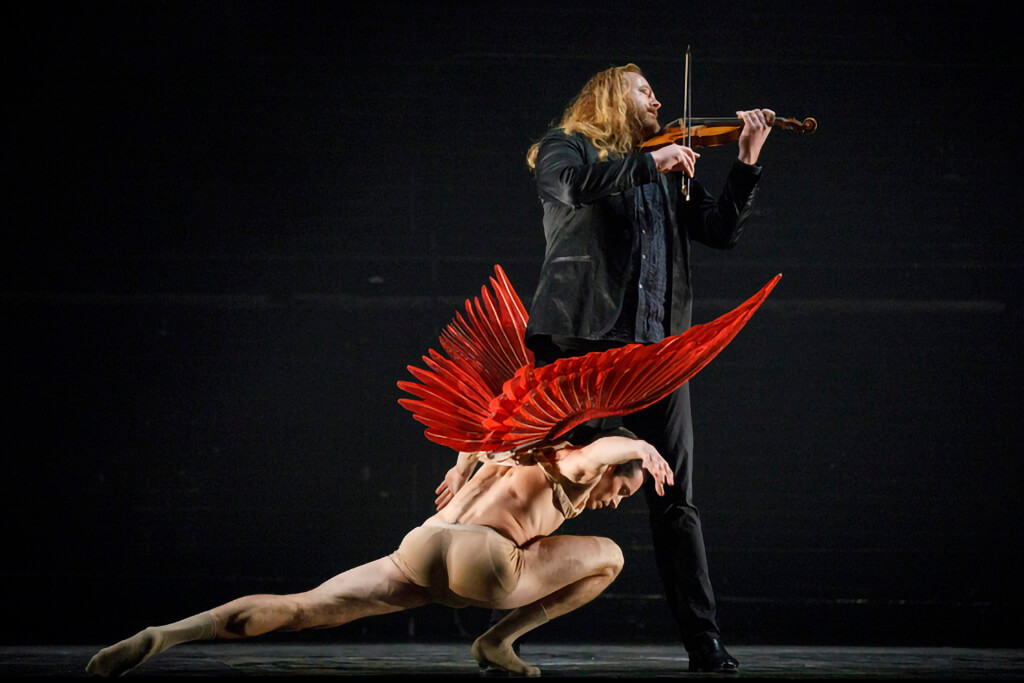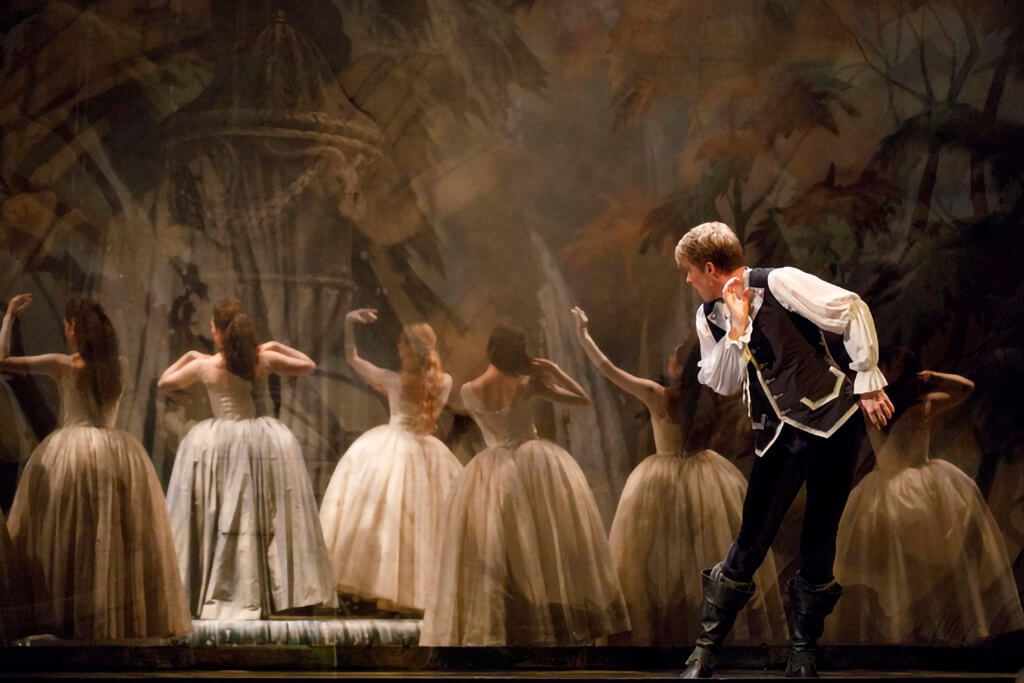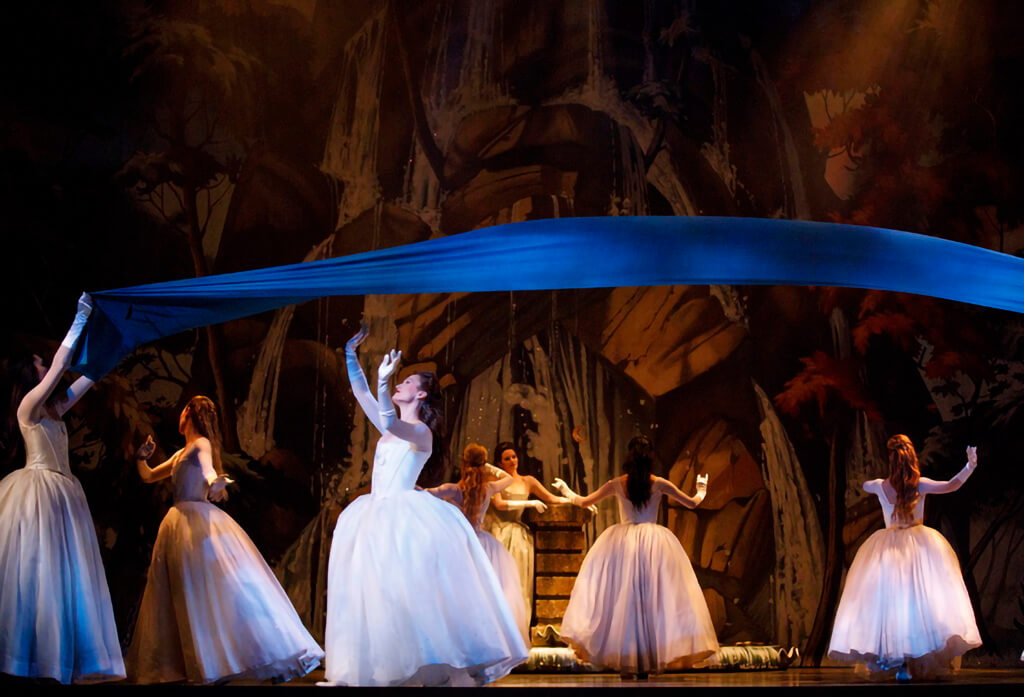
Actéon and Pygmalion/ Marc-Antoine Charpentier and Jean-Philippe Rameau. Opera Atelier and Tafelmusik Baroque Orchestra. Marshall Pynkoski (Director) and Jeannette Lajeunesse Zingg (Choreographer), David Fallis (Conductor). Elgin Theatre, 189 Yonge St., Runs through Nov. 3. operaatelier.com
Opera Atelier opened their 2018-2019 season with a charming double-bill of French one-act opera-ballets, leading off with a bracing performance of Charpentier’s mini-tragédie en musique Actéon and ending with Rameau’s delightful yet blisteringly virtuosic Pygmalion.
But the bigger story Thursday night was the dancing, and in that light, artistic director Marshall Pynkoski’s opening announcement from the stage that he had decided to include contemporary dance in future performances of Opera Atelier and its ever-growing repertoire, was welcome news indeed.
To show how well their new concept could work in enhancing Baroque opera-ballet, the company’s long-time Baroque ballet soloist Tyler Gledhill debuted an enticing performance of his new contemporary choreography Inception, a dream-like proto-universe when cosmic energy was suffused only with the creative power of a pure Eros. The new ten-minute work had its debut at Versailles last season, but here served as sturdy prologue to Rameau’s Pygmalion, the story of a sculptor who falls in obsessive love with his own creation and asks Venus to bring her to life.
The themes of desire and reward, frustrated eros and divine creative fire mixed unmistakably well, and together, Inception and Pygmalion made the evening’s second half the predominant artistic focus and the absolute highlight of the night’s performances.
Gledhill entered in half stocking, full red-slatted wings fanned nearly a metre across his back, and danced a muscular, permutated abstraction of Cupid come alive, as though cracking forth out of the Louvre’s celebrated Canova sculpture with powerful yet controlled gesture. Solo violin accompaniment was provided by Tafelmusik violinist Edwin Huizenga who provided an equitable sonic space of considered tonal hue for Gledhill to diffuse his studied characterizations.

While engrossing and definitely lovely, it would certainly be more effective either without stocking at all, or with an all-leotard, akin to performances of EROS.MINOS and other similar-themed works. The immediate sense is that Gledhill could be still more unchained to do what he really wants. He has enormous talent, and my guess is that Inception is only an incipient installment of a multi-part series of panels along these lines as the company develops the work into a full cantata.
Regardless, at first blush reaction ought to be that we want more of this and lots of it, complete with a full-study version of this primal force in mythopoetic dance. And Gledhill is the one to do it.
What followed in Rameau’s Pygmalion (1748) was very nearly the musical-dance ideal based on Ovid’s original tale Pygmalion. Colin Ainsworth sang ebulliently and quintessentially in mid-century style, his tenor a perfect transliteration of the original and rare haute-contre. Ainsworth’s voice is a true gift to audiences, and here he literally became the vocal embodiment of Gledhill’s movement power, just as Mireille Asselin’s Amour (Cupid) personified the divine Eros characterization with her command and ease of line and pure grace.

Allyson McHardy’s brief performance of Pigmalion’s jilted love interest Céphise was at once sympathetically alluring as it was entirely dominant of the action. After hearing McHardy, I wanted an opera entirely about her character. Not enough is written about the rarity of McHardy’s instrument, the ease with which she crosses from era to era and the multiple vocal types (Fach) she can emulate.
Ainsworth has the kind of voice that makes you think of several composers and their diverse styles all at once, ranging from Lully to Gluck to Mozart and well beyond. He was brilliant and brought to life the many instructive elements of story-telling found in the courtly entertainments of Louis XV. What a time it must have been to experience such unvarnished praise of living a life steeped in an eros at once thought of as creative as it would have been extolled for its pure pleasure. There were no brakes here on Ainsworth as he disgorged a virtuoso series of scales, trills, and breath-defying virtuosity in his prayer to Venus and his celebratory aria to end the work, the very acme of Rameau’s musical depictions.
Another distinct pleasure was the dancing, and happily, there was plenty provided with freshly new, freely choreographed sections by Jeanette Lajeunesse Zingg. Rameau’s Pygmalion is after all, an Acte de Ballet set to music, and representation of Graces, Laughter and Games to celebrate the work’s final marriage of Pygmalion to his statued creation Galatea, brought to life eminently well by a comical but entirely supple-voiced Meghan Lindsay, all came together with skill and unstinting energy.
The dances were inspired and lovely, all in perfect traditional execution of Gavotte step in half pointe and a fine variation of Minuet (one of many dozens). But the Loure and Chaconne were outstanding not only as representations of their types but in their sheer, albeit controlled, energy. Gledhill’s solo was captivating and sensuous but appropriately restrained, curved and geometric, lithe but elegant.
The Sarabande was literally a clinic in how to dance with appropriate sobriety to its well-known agogic beat placement with correct footfalls, while the very opposite-in-character Rigaudon, with its spritely vertical jumps, pleasantly surprised in just how well one dance could flow into another close by, the model of Baroque juxtaposition demonstrating an early encyclopedia of human attributes. The success of these performances owed a lot to Tafelmusik director David Fallis and his unwavering skill in constantly shifting metres from dance to dance.

The tambourin with minuet-contredanse ended the lively celebration well. The audience loved the expected Commedia dell’arte pantomime satire of the lovers’ travails on their way to happiness, a splendid convention well established in Shakespeare’s A Midsummer Night’s Dream.
The evening opened with a pleasing yet conspicuously detailed performance of Charpentier’s rather dark pastoral tragedy Actéon (1684), an adaptation from Ovid’s original story about a hunting nobleman who views the goddess of the hunt Diana bathing in moonlight. When Diana (Mireille Asselin) discovers Actéon (Colin Ainsworth), she turns him into a stag for his voyeurism, and he is subsequently torn apart by wild hounds, who, ironically are his own hunting dogs.
The performance of Charpentier’s minor masterpiece mini-tragédie was an unqualified success for its singing, staging and dancing. Again, Lajeunesse Zingg provided freely choreographed dances entirely suited to the various characters, including some elegant ballonnée for the nymphs of Diana and dignified lyrical movement expression for the mourners of Actéon.
At the end of the 45-minute performance, it seemed fitting that Pynkoski presented a floral bouquet honouring the lovely Lajeunesse Zingg, an accomplished dancer, artist, researcher, scholar, performer, and cherished mentor for many across multiple age groups, many of whom are still dancing thanks to her inspiration. Without Lajeunesse Zingg, there are multiple operas we would not truly know today beyond ersatz copying of period practice musical performances.
Lajeunesse Zingg has definitely shown us that to know and love music is to know and love dance, uncompromisingly, undilutedly, and if we are to understand the eighteenth century’s love of the operatic art form, we must approach it as she did in last night’s performances, and just as powerfully as she did in those unforgettable dance performances of Charpentier’s Médée two years ago, not to mention the many more works too numerous to mention she has choreographed and directed these past 33 years.
It is not possible to think of Toronto’s opera scene without the superb talents of Jeanette Lajeunesse Zingg.
- SCRUTINY | Opera Atelier’s Film Of Handel’s ‘The Resurrection’ A Stylish And Dramatic Triumph - May 28, 2021
- HOT TAKE | James Ehnes And Stewart Goodyear Set The Virtual Standard For Beethoven 250 - December 15, 2020
- SCRUTINY | Against the Grain’s ‘Messiah/Complex’ Finds A Radical Strength - December 14, 2020



